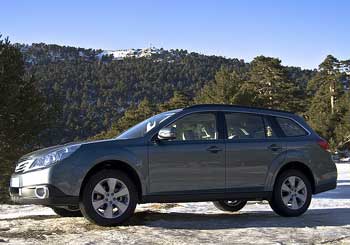 Modern life is increasingly full of diversions, and some have even crept into the drivers’ seat—phone calls, text messages, on-board video displays, fast food—all can cause accidents by distracting drivers. While teenagers, new to both driving and cell phones, are often targeted as the primary perpetrators of distracted driving, the problem has long since expanded to people of every age and background. Recent studies have shown that distracted drivers perform just as poorly on driving tests as intoxicated drivers. Here are a few of the prime suspects, and what you can do to stay safe on the road.
Modern life is increasingly full of diversions, and some have even crept into the drivers’ seat—phone calls, text messages, on-board video displays, fast food—all can cause accidents by distracting drivers. While teenagers, new to both driving and cell phones, are often targeted as the primary perpetrators of distracted driving, the problem has long since expanded to people of every age and background. Recent studies have shown that distracted drivers perform just as poorly on driving tests as intoxicated drivers. Here are a few of the prime suspects, and what you can do to stay safe on the road.
1. Cell phones
Cell phones are the most common offender in distracted driving; most drivers have experienced the frustration of watching someone drive discourteously or dangerously because they were busy texting or talking on their cell phones. It’s a strange twist of human psychology too, we tend to excuse behavior in ourselves that can be infuriating when we see it in other people; it’s easy to rationalize that you’re on a safe stretch of road, or you’re a more capable driver and can therefore “handle” talking or texting while driving. For obvious reasons, it’s hard to notice how these activities impair you unless you actually experience a close call or an accident. Don’t wait until you need a lawyer to change bad behavior—keep your phone on silent when you drive, or have a passenger handle your calls for you. If it’s an emergency, make the call brief and have someone else dial for you if possible. There is no reason to ever text while driving, and it’s illegal in many jurisdictions.
2. Dashboard displays
Luxury cars have long come equipped with backseat video displays for long trips, but with the advent of large touchscreen displays on dashboards, drivers have one more thing to draw their attention from the road. These devices can be useful, often incorporating GPS, hands-free telephone, and web browsing—but they can all be a hazard on the road. To use a dashboard display safely, leave it turned off whenever possible. If you need to check your GPS route or operate the dashboard controls, make sure the screen brightness is at a comfortable level—bright enough that you don’t have to strain to see it, but dim enough that it doesn’t draw your attention away from the road.
3. Eating while driving
This is one you might not think of when you hear about distracted driving, but fast food can be a real danger under the right circumstances. If you like to keep your car clean, a dropped French fry or a bit of lettuce can present a strong temptation to take your eyes off the road. Spilling a drink on yourself on the way to the office can be frustrating, and if it happens to be a hot cup of coffee, it can be even more urgent. If you choose to eat in the car, accept that cleanup should take place when you’ve arrived, not while you’re driving. If you spill a drink, pull over as soon as it’s safe, and clean yourself up—don’t try to manage the situation at 70 miles an hour. If you drop something large down by the pedals, like a bottle of water, or the garbage from a fast food meal, you need to pull over immediately and remove them; items like that can get jammed behind the brakes and cause a serious accident.
About The Author: Leslie Krick is a staff writer for Bachus & Schanker, A law firm where you can contact a Louisiana accident attorney to provide you with professional legal counsel for your auto accident claim.
Photo credit: https://www.flickr.com/photos/davidvillarreal/4357851164/

